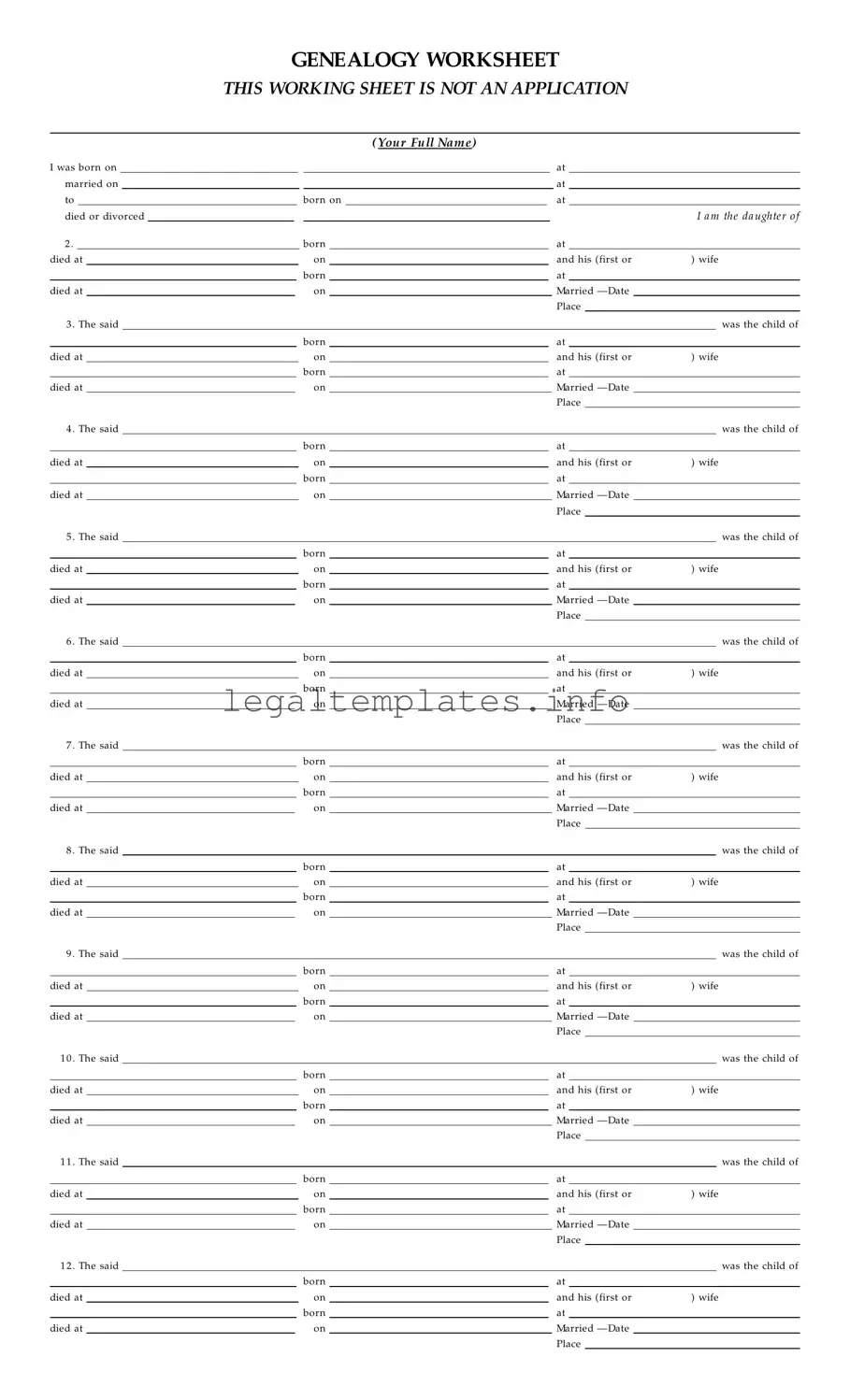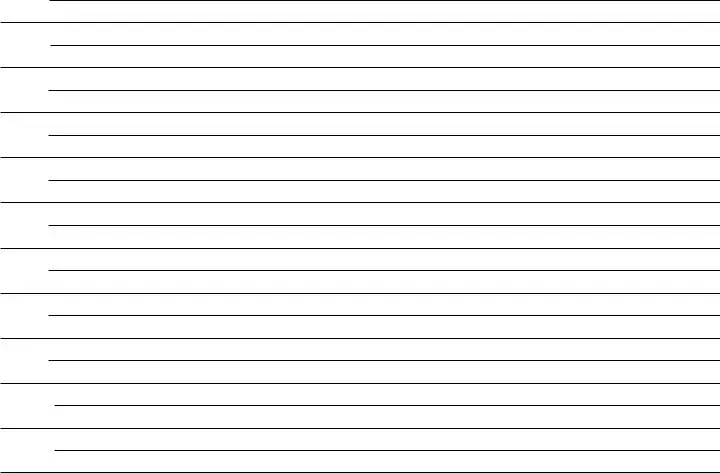What is the purpose of the DAR Genealogy Worksheet form?
The DAR Genealogy Worksheet is designed to help individuals gather and organize their genealogical information. This worksheet is particularly aimed at those tracing their lineage back to ancestors who contributed to American independence during the Revolutionary War. Although it is not an official application form, it serves as a preparatory step for submitting a membership application to the Daughters of the American Revolution (DAR).
Can anyone use the DAR Genealogy Worksheet, or is it just for DAR members?
The worksheet can be used by anyone interested in genealogical research, especially those who are considering applying for membership to the DAR. It helps gather essential details about one's ancestors and their contributions to American independence, which is a requirement for DAR membership.
What types of information do I need to fill out on the worksheet?
The worksheet requires detailed information about your lineage, including birth, marriage, and death dates and places for you and your ancestors. It also asks for details regarding the marriage(s) of each ancestor and their contributions during the American Revolution. Additionally, you'll need to provide references for the lineage and the ancestor's services during the war.
Why does the worksheet ask for information about marriages more than once?
This question aims to capture all pertinent family history by acknowledging that ancestors may have had multiple spouses due to various circumstances, including widowhood and divorce. The information helps in accurately tracing lineage and understanding family dynamics during the time of the Revolutionary War.
How detailed should the information about my ancestor's Revolutionary War service be?
The information should be as detailed as possible, including the capacity in which your ancestor assisted in establishing American Independence. You should also provide sources for your ancestor’s services, such as published records or photocopies of official unpublished records, to validate their contributions.
What if I cannot find documented proof of my ancestor's service during the Revolutionary War?
Finding documented proof can be challenging, but the DAR provides resources to assist in your research. If you're struggling, consider reaching out to genealogical societies, historical societies, or professional researchers for help. Remember, tradition and hearsay are not acceptable as proof; official records and documents are required.
Why is tradition not acceptable for verifying ancestor information?
Tradition, or family stories, although valuable, are considered unreliable because they can evolve and change over time. The DAR requires documented evidence to ensure the accuracy and verifiability of each membership application. This approach maintains the integrity of the organization’s genealogical records.
Can the DAR Genealogy Worksheet form be submitted as part of my membership application?
No, the worksheet itself is not an application and should not be submitted as one. It is a tool to help you collect and organize the necessary information you will need to fill out the official DAR membership application. Once you have collected all the required information and documentation, you can proceed with submitting your formal application for membership to the DAR.


